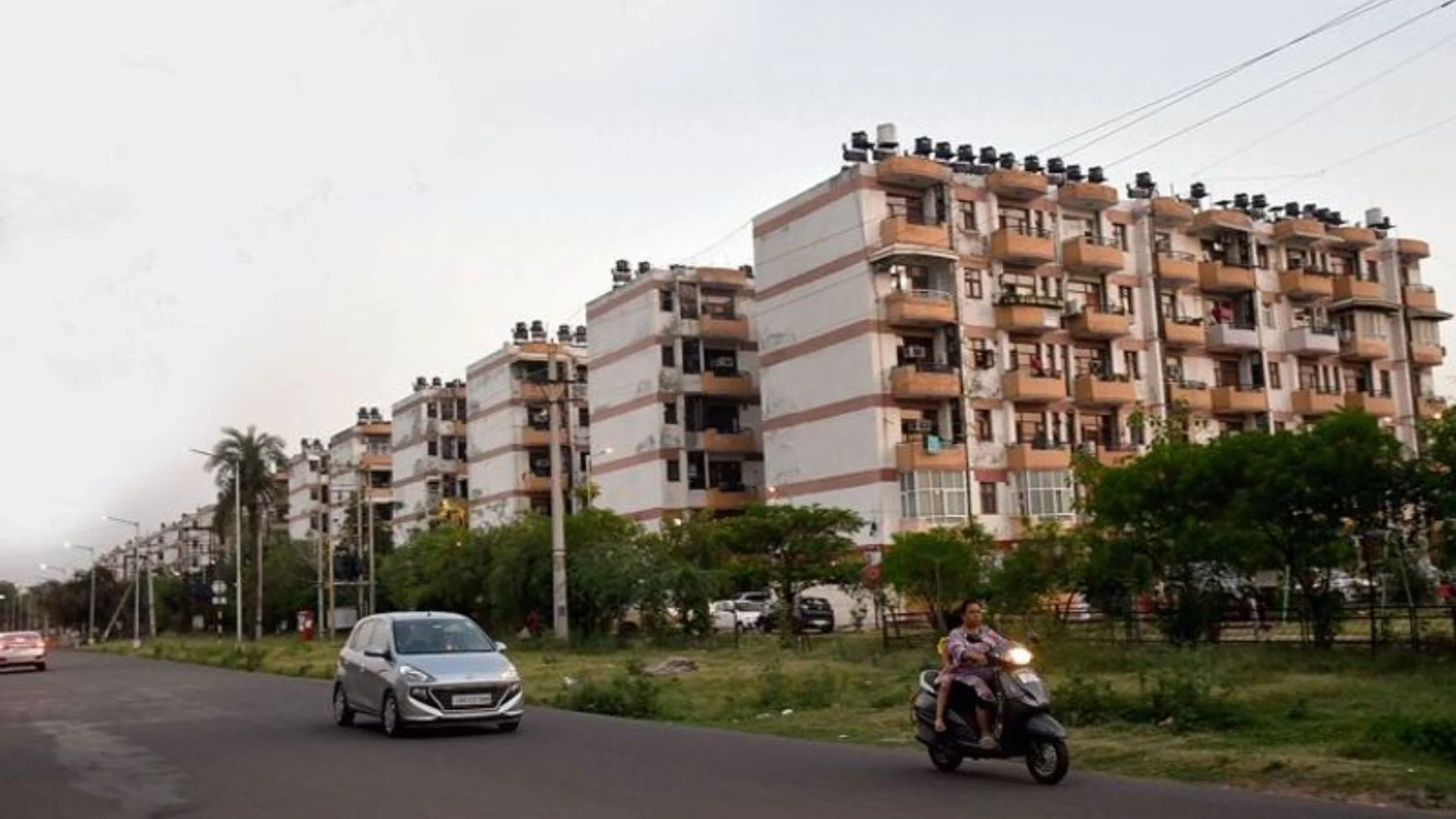Table of Content
Mumbai and Pune, two of Maharashtra’s major economic powerhouses, have long been connected by the Mumbai-Pune Expressway. However, increasing traffic, congestion, and the need for efficient travel between these two cities have prompted the Mumbai Metropolitan Region Development Authority (MMRDA) to embark on an ambitious infrastructure project. With an investment of Rs 1,102 crore, MMRDA plans to construct elevated corridors to enhance connectivity, reduce travel time, and drive economic growth in the region.
In this blog, we break down everything you need to know about this project from the route and design features to the expected impact on real estate and regional development.
Project Overview
.jpg)
The new elevated corridors are part of MMRDA’s larger strategy to modernize transportation networks and facilitate smoother commutes between Mumbai and Pune. With the busy Mumbai-Pune corridor under increasing pressure from rising vehicular traffic, the Rs 1,102 crore project is designed to provide a faster, more reliable alternative for commuters.
The project encompasses the development of two six-lane elevated corridors:
- Chirle to Gavan Phata Corridor: This 4.298 km stretch will connect the Chirle end of the MTHL to Gavan Phata, traversing the JNPT-Panvel National Highway (NH-348). The plan also includes reconstructing service roads along this route to facilitate smoother traffic flow.
- Palaspe Phata to Mumbai-Pune Expressway Corridor: Spanning 1.700 km, this corridor will link Palaspe Phata directly to the Mumbai-Pune Expressway. Additionally, the existing Old Mumbai-Pune National Highway (NH-48) in Raigad district will be widened to six lanes to accommodate increased vehicular movement.
Also Read: Nashik Property Tax Revised: 2% Hike & New Rental Assessment Rules
Key objectives of the project include:
- Enhanced Connectivity: Improving the movement of people and goods between Mumbai and Pune.
- Reduced Travel Time: Cutting down commute times by offering a dedicated elevated route, free from the usual traffic congestion.
- Safety and Efficiency: Providing a modern infrastructure that minimizes accidents and delays, ensuring smooth transit.
- Economic Growth: Stimulating local economies by improving access to key commercial and residential hubs along the corridor.
Key Features of the Elevated Corridors
1. Elevated Design for Faster Commutes:
Unlike traditional roadways, the elevated corridors will be constructed above ground level. This design minimizes disruptions from local traffic, ensuring that vehicles can travel without interference. The dedicated lanes are expected to significantly reduce travel time between Mumbai and Pune, making it an attractive option for daily commuters as well as long-distance travelers.
2. Robust Infrastructure Investment
With a total investment of Rs 1,102 crore, this project represents one of the most significant infrastructure initiatives in the region. The substantial budget reflects the importance of the project in addressing current transportation challenges and setting the stage for future urban development. The investment is also expected to generate job opportunities and spur additional economic activities in the construction and related sectors.
Project Timeline
Timelines are a critical aspect of infrastructure projects. According to the latest updates, the following schedule has been outlined for the elevated corridor project:
- Project Announcement and Funding Approval:
The project was recently announced with full funding of Rs 1,102 crore approved by the relevant authorities. - Commencement of Construction:
Construction is slated to begin soon, with preliminary work such as surveys and land acquisition already underway. Exact start dates may vary, but the aim is to commence major construction within the next few months. - Expected Completion:
While large-scale infrastructure projects often experience minor delays, industry experts project that the elevated corridors could be operational by 2027–2028, assuming timely clearances and efficient project management.
This timeline provides commuters, investors, and residents with a clear framework to anticipate when enhanced connectivity will be available, and it offers a benchmark for planning related investments or property decisions along the corridor.
Impact on Real Estate and Regional Economy
1. Boost to Property Values
One of the most significant impacts of the elevated corridor project will be on real estate. Improved connectivity between Mumbai and Pune is expected to raise property values along the corridor. Areas near new interchanges and access points are likely to see increased demand, making them attractive for residential and commercial development.
2. New Development Opportunities
As the project progresses, developers are expected to launch new residential and commercial projects to cater to the growing demand in previously underdeveloped areas. Enhanced infrastructure, along with reduced travel times, will make these regions more desirable for both homebuyers and investors.
3. Economic and Urban Growth
The elevated corridor is poised to drive broader economic growth in the region. With smoother transit options, businesses will benefit from increased efficiency, and the overall urban environment will improve. This development is expected to create jobs, attract further investments, and stimulate local economies on both sides of the corridor.
Conclusion
The MMRDA’s Rs 1,102 crore elevated corridor project to improve Mumbai-Pune connectivity is a transformative initiative with far-reaching implications. By providing a dedicated, modern transit route, the project is set to reduce travel times, ease traffic congestion, and stimulate economic growth in the region. For real estate investors, homebuyers, and businesses, enhanced connectivity will translate into higher property values, new development opportunities, and a more vibrant urban landscape.
With construction expected to begin in the coming months and the corridor projected to be operational by 2027–2028, stakeholders across the region have clear reasons to be optimistic about the future. Stay informed about project updates and be ready to take advantage of the opportunities this transformative infrastructure project will bring to Mumbai, Pune, and the broader NCR.
Also Read: How NCR Residents Can Ensure the Earthquake Safety of High-Rise Buildings

_1739948218.webp)

_1765522271.webp)

_1765444636.webp)

Ans 1. The project aims to improve connectivity between Mumbai and Pune by reducing traffic congestion, shortening travel times, and providing safer, more efficient transportation infrastructure.
Ans 2. The total cost of the project is Rs 1,102 crore.
Ans 3. Chirle to Gavan Phata Corridor (4.298 km)Palaspe Phata to Mumbai-Pune Expressway Corridor (1.700 km)
Ans 4. The elevated corridors will feature six-lane designs, minimize disruptions from local traffic, and include widened service roads and highways for smoother commutes.
Ans 5. Construction is expected to start soon, with surveys and land acquisition already underway.
Ans 6. The project is projected to be completed and operational by 2027–2028, subject to timely clearances and efficient project management.
Ans 7. Improved connectivity is expected to increase property values and demand for residential and commercial development near the interchanges and access points.
Ans 8. The project will reduce travel times, provide safer transit, and ensure smoother commutes free from traffic congestion.
Ans 9. This corridor will connect the Chirle end of the MTHL to Gavan Phata, enhancing access via the JNPT-Panvel National Highway (NH-348).
Ans 10. Updates on the project can be found on MMRDA’s official website and through periodic announcements from the Maharashtra government.